Study says buyout of threatened Outer Banks homes would be cheaper than beach nourishment
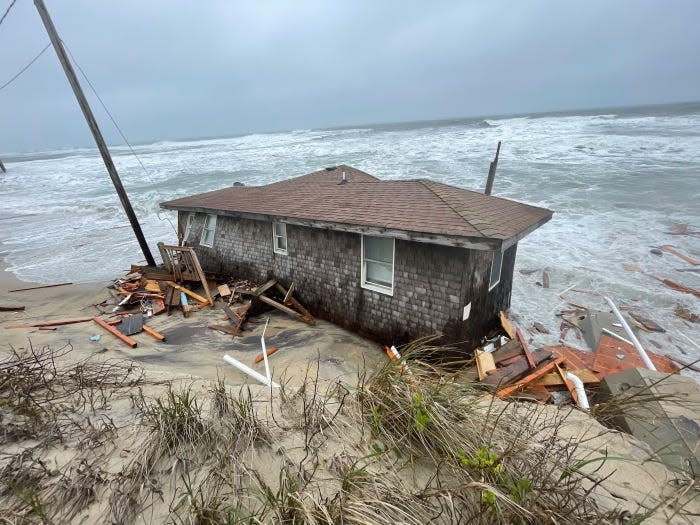
The inlet was coming.
For more than 15 years, Mason Inlet had been marauding south, approaching the structures at the north end of Wrightsville Beach. It had already carved away hundreds of acres of sandy spit, a public parking lot, and the land that was home to the temporary beach house used in Julia Robert's 1991 film "Sleeping with the Enemy."
By the early 2000s, it was just yards from the nine-story Shell Island Resort, only stopped by a line of large sandbags.
Faced with letting one of Wrightsville Beach's signature structures wash away or cobbling together a funding package to move the inlet, the New Hanover County Commissioners chose the latter. The county would relocate the inlet 3,000 feet to the north with property owners at the north end of Wrightsville Beach and those on Figure Eight Island, a wealthy private enclave on the other side of the inlet, assessed a special assessment to repay the $6.5-million relocation cost and future maintenance costs.
More than two decades after the 2002 relocation project, the inlet remains stably and safely away from threatening the expensive beachfront properties on either side of the waterway.
Along coastal North Carolina, engineering answers to threats from Mother Nature is a time-honored tradition to dealing with eroding beaches and threats from wandering inlets.
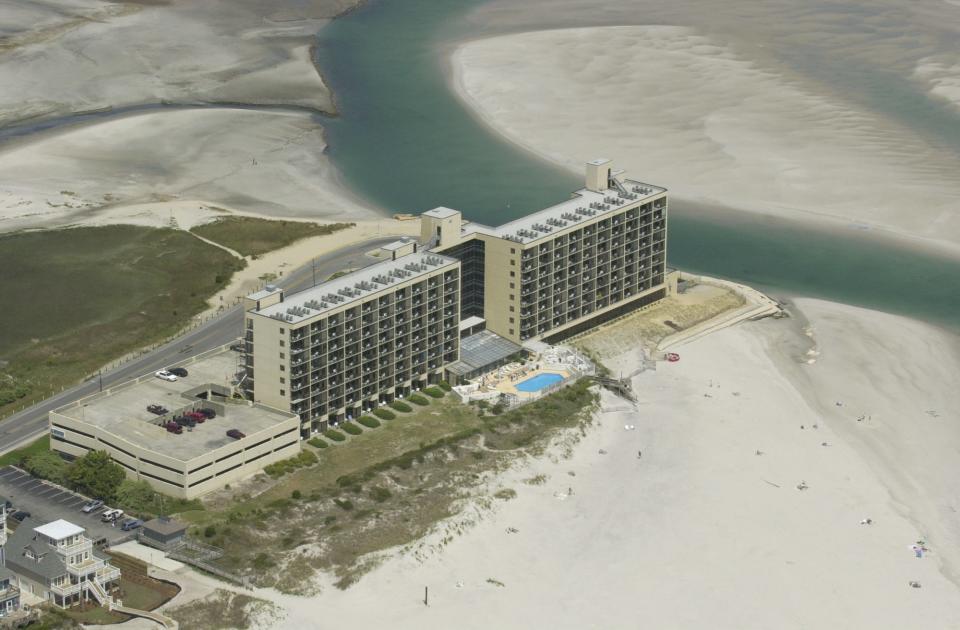
PHOTOS Mason Inlet 10yrs Later
But pumping sand isn't cheap. It also us becoming a scarce commodity along some parts of the N.C. coast. Moving waterways or building hardened structures, like terminal groins, also can break the budgets of many local beach communities that don't have the deep pockets of a Wrightsville Beach or financial support from Washington or Raleigh.
Taking a step back?
Faced with a future of rising seas and stronger storms intensified by climate change, state and local officials are scrambling to keep up.
But one option occupies a relatively rare seat at the table for discussion by local officials and residents: moving oceanfront structures out of harms way.
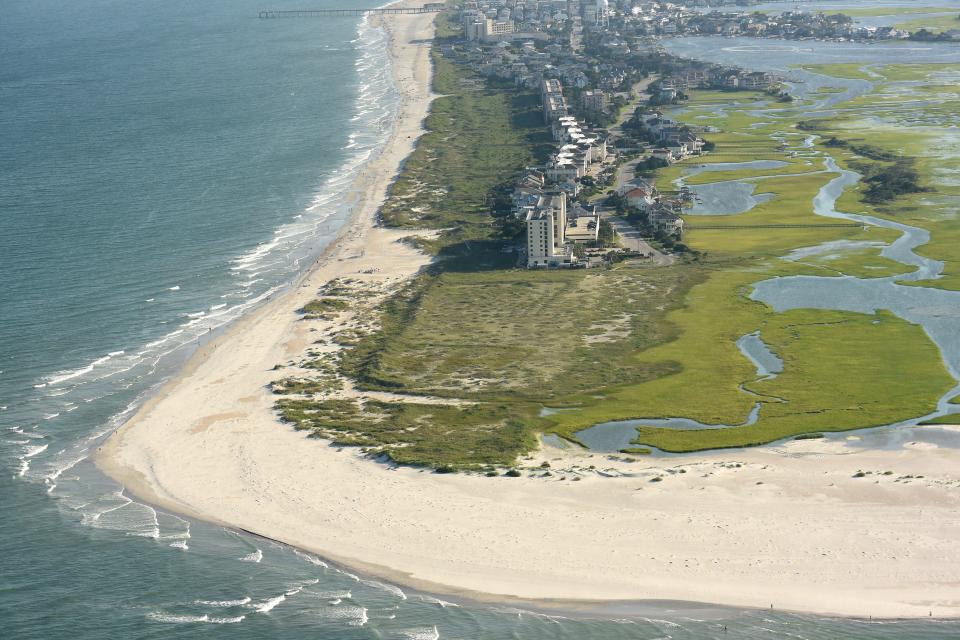
While it might make financial sense, such a move is fraught with economic, emotional and public relation minefields.
Nowhere is that more true along the North Carolina coast than in Rodanthe, an unincorporated village on the Outer Banks that has some of the highest erosion rates on the East Coast. Since early 2022, four homes have fallen into the encroaching Atlantic, and more that a dozen other oceanfront homes could soon be in danger.
Rodanthe property owners have called for Dare County to nourish the village's beach, something the county has funded in other towns along the narrow string of barrier islands that lean out into the Atlantic.
CHANGING LANDSCAPE On the Outer Banks, structures rise and fall as climate change looms
But county officials said a one-time beach nourishment could cost as much as $40 million, and maintaining the village's beach over 30 years, where sand is washing away upwards of 20 feet a year in places, would cost more than $175 million.
Dare County Manager Bobby Outten said the county's beach nourishment fund, which comes from a special tax levied on hotel and short-term rental stays, has roughly $6 million in its account, and a significant influx of money from federal or state sources seems unlikely, at least in the short term.
A longer-term solution to erosion?
Rodanthe's precarious position prompted the Program for the Study of Developed Shorelines to look into another alternative.
Buying out 80 of the village's most exposed oceanfront properties, those within 300 feet of the high-tide line, at current assessed tax value would cost roughly $43 million. The study, released last month, said only one of the homes appears to be a primary residence, and the loss of roughly $171,000 in county property tax revenue (2023 figures) represented just 0.25% of the Dare County tax base. Over 30 years total lost revenue could reach $10 million, although some of this would likely be made up by new construction and second-row homes becoming oceanfront homes.
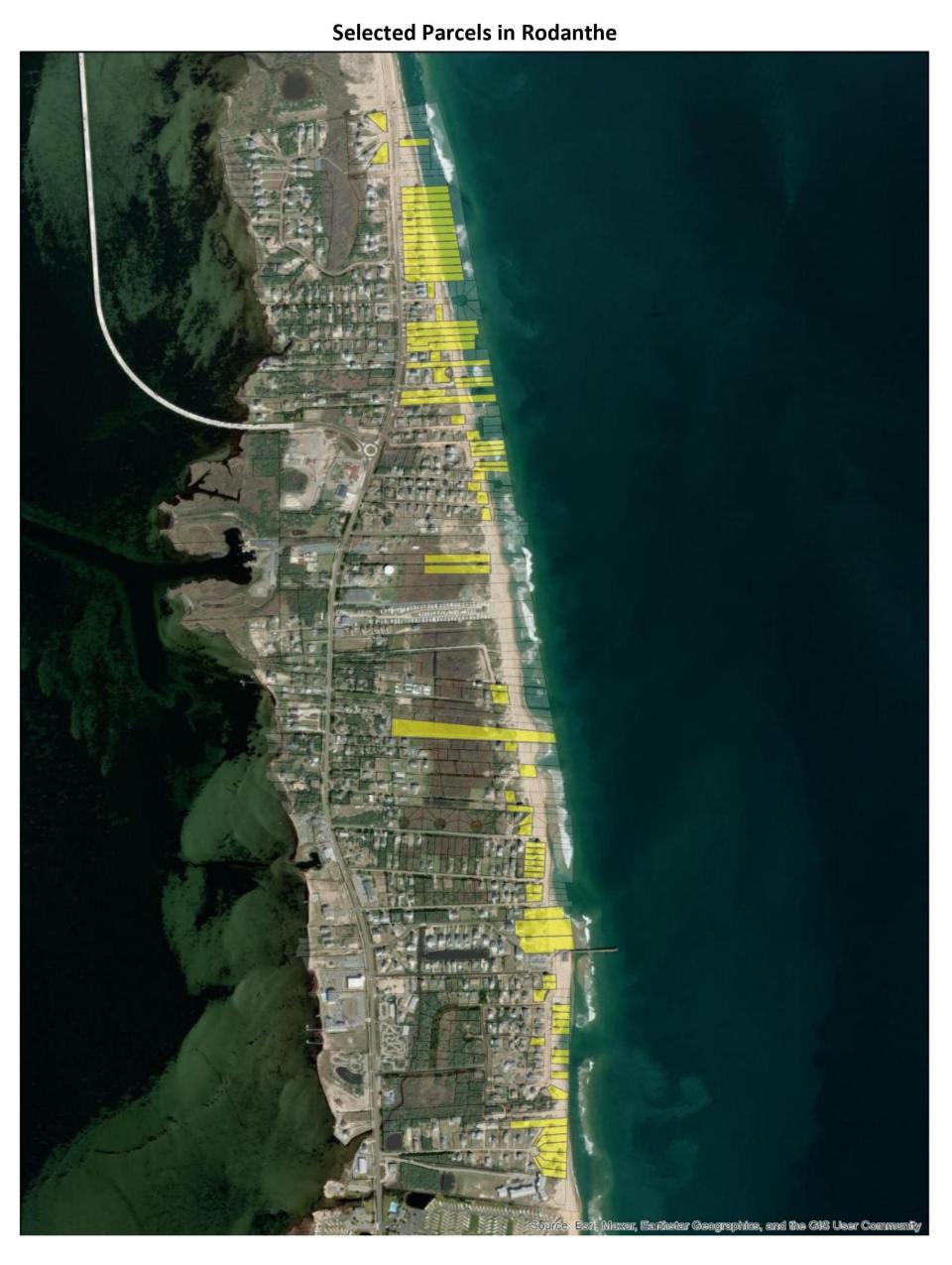
The study said removing Rodanthe's most-threatened structures also would give the village a viable beach for 15-25 years, versus the five years or less a nourishment project would guarantee.
"It truly is the best place to start thinking about these issues, because this is happening there at this very moment," said Katie Peek, coastal research scientist with Western Carolina University's Program for the Study of Developed Shorelines.
'Much bigger' than 20 homes
But there are significant hurdles, financial and other, to moving threatened oceanfront homes.
Governments are generally loathe to take private property or force people to move, and haggling over a home's value can get ugly.
Outten said buyouts also wouldn't sole the problem, just delay it, since the ocean will keep coming.
PARADISE LOST? Study says climate change could impact the rapid growth along the NC, SC coasts
He added that beach nourishment projects on the Outer Banks aren't just to protect threatened oceanfront homes, but critical infrastructure − notably N.C. 12 − that keeps the county's vital $1.3 billion tourism economy functioning.
"It's much bigger, much bigger than just 20 homes in Rodanthe," Outten said.
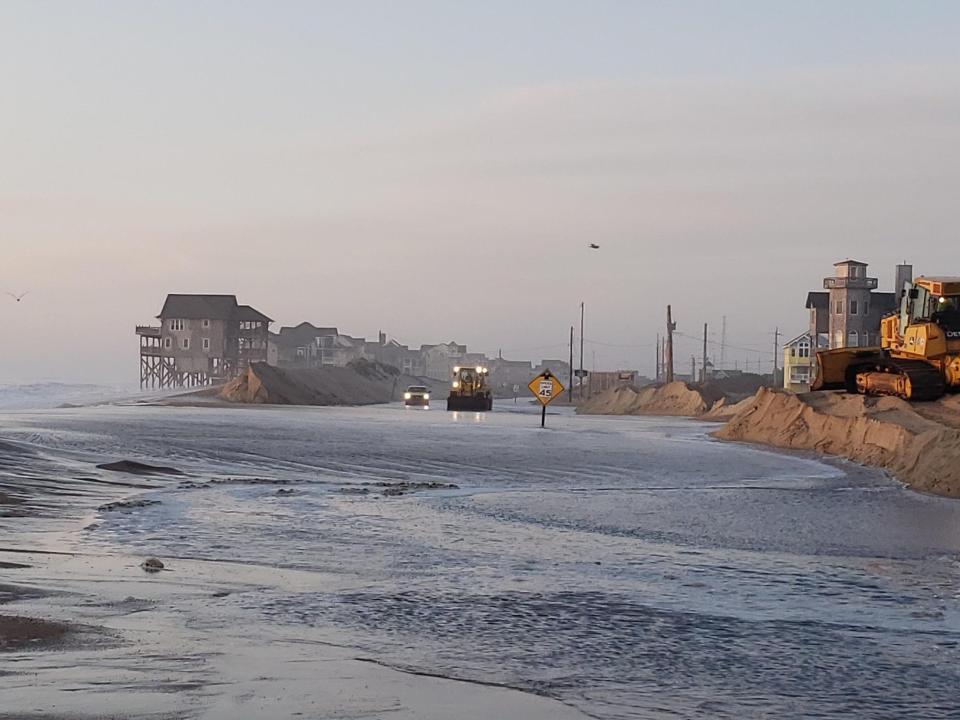
Along North Carolina's southern coast, encroaching waters have prompted towns from Surf City to Holden Beach to fund beach nourishment projects. Ocean Isle Beach also has built a terminal groin to protect homes along the Brunswick County island's eastern tip threatened by Shallotte Inlet.
Protecting property values and keeping the vacation-fueled economies of these small beach towns remains the goals of these projects. But what happens if the cost burden gets too great?
"We just want it to be one consideration on the table for these officials and residents when they are faced with situations like this," Peek said.
LeAnn Pierce is vice chair of the New Hanover County Commissioners. She also is the former mayor of Carolina Beach, and owns Drifters Reef Hotel in the beach town. While Pierce said balancing environmental, economic and political considerations when faced with a disappearing beach is a "complicated animal," she said the issue is a lot more than just safeguarding oceanfront property owners.
"It's not only protecting homes and infrastructure, it's protecting the local economy and the local jobs in these communities," she said. "If there's no beach for the tourists to come to, they aren't going to come, and then you have a real economic disaster."
Back at Shell Island in Wrightsville Beach, one-bedroom condominium units at the resort are on the market for $600,000.
When Mason Inlet was licking at the resort's foundation, they could be had for $40,000.
Reporter Gareth McGrath can be reached at GMcGrath@Gannett.com or @GarethMcGrathSN on Twitter. This story was produced with financial support from 1Earth Fund and the Prentice Foundation. The USA TODAY Network maintains full editorial control of the work.
This article originally appeared on Wilmington StarNews: NC beach houses on Outer Banks are threatened. Are buyouts the answer?

